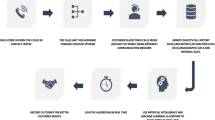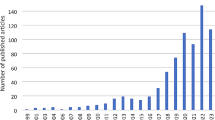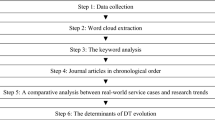Abstract
In this paper we investigate the relationship between ICT infrastructure and innovation. In recent years the concept of the enterprise service bus has been introduced as an ICT architecture that supports strong integration of distributed components and services, but at the same time allows for adding or subtracting business partners at short notice. What are the organizational issues and challenges of this approach? Building on a case study from Norway we investigated this topic in the context of innovation of ICT based services. Our findings were analyzed at three levels; the bus as technical infrastructure, the bus as innovation infrastructure and the bus as organizational structure. We find that the bus as technical infrastructure supports innovation within a business unit, while the bus as innovation infrastructure facilitates the innovation of new business services. Further, we propose that a shared topology of these three levels is important to support the overall innovation process. As illustrated in our case, this also raises new challenges for the innovative corporation.





Similar content being viewed by others
References
Baldwin, C. Y., & Clark, K. B. (1997). Managing in an age of modularity. Harvard Business Review, 75(5), 84–94.
Beniger, J. R. (1986). The control revolution: Technological and economic origins of the information society. Cambridge, MA: Harvard University Press.
Cai, H., Chung, J., & Su, H. (2008). Relooking at services science and services innovation. Service Oriented Computing and Applications, 2(1), 1–14. doi:10.1007/s11761-008-0020-9.
Castells, M. (1996). The rise of the network society. Oxford: Blackwell.
Chappell, D. (2004). Enterprise service bus. Sebastopol, CA, USA: O’Reilly Media.
Ciborra, C. (2000). From control to drift. Oxford: Oxford University Press.
Cummins, F. A. (2002). Enterprise integration: An architecture for enterprise application and systems integration. New York, USA: Wiley & Sons.
Fulk, J., & DeSanctis, G. (1999). Articulation and communication. In G. DeSanctis & J. Fulk (Eds.), Shaping organization form: Communication, connection, and community, pp. 5–32. Newbury Park, CA: Sage.
Garud, R., & Kumaraswamy, A. (1995). Technological and organizational designs for realizing economies of substitution. Strategic Management Journal, 16, 93–109. doi:10.1002/smj.4250160919.
Hanseth, O., & Lyytinen, K. (2008) “Theorizing about the design of Information Infrastructures: design kernel theories and principles.” http://heim.ifi.uio.no/~oleha/Publications/ISRinfrastructurefinal05-12-05.pdf, accessed: May 3rd 2008.
Iyer, B., & Davenport, T. H. (2008). Reverse engineering. Googles innovation machine. Harvard Business Review, (April), 59–68.
Langley, A. (1999). Strategies for theorizing from process data. Academy of Management Review, 24(4), 691–710. doi:10.2307/259349.
Langlois, R. N. (2002). Modularity in technology and organization. Journal of Economic Behavior & Organization, 49, 19–37. doi:10.1016/S0167-2681(02)00056-2.
Lawrence, P. R., & Lorsch, J. W. (1967). Differentiation and Integration in complex organizations. Administrative Science Quarterly, 12(1), 1–47. doi:10.2307/2391211.
Marks, E. A., & Bell, M. (2006). Service-Oriented Architecture (SOA): A planning and implementation guide for business and technology. New York, USA: Wiley & Sons.
Markus, M. L., Manville, B., & Agres, C. E. (2000). What makes a virtual organization work? Sloan Management Review, 42(1), 13–26.
Miles, M. B., & Huberman, A. M. (1994). Qualitative data analysis. Thousand Oaks: Sage.
Mintzberg, H. (1983). Structures in fives: Designing effective organizations. Englewood Cliffs, USA: Prentice-Hall.
Parnas, D. L. (1972). On the criteria for decomposing systems into modules. Communications of the ACM, 15(12), 1053–1058. doi:10.1145/361598.361623.
Pettigrew, A. M. (1985). Contextualist research and the study of organizational change processes. In E. Mumford, R. Hirschheim, G. Fitgerald & A. T. Wood-Harper (Eds.), Research methods in information systems, pp. 53–78. Amsterdam: North-Holland.
Ross, J. W., Weill, P., & Robertson, D. (2006). Enterprise architecture as strategy: Creating a foundation for business execution. Harvard Business School.
Schilling, M. A. (2000). Toward a general modular systems theory and its application to interfirm product modularity. Academy of Management Review, 25(2), 312–334. doi:10.2307/259016.
Tidd, J., & Hull, F. M. (2003). Service innovation. Organizational responses to technological opportunities & market imperatives. London: Imperial College.
Zhao, J. L., Tanniru, M., & Zhang, L.-J. (2007). Services computing as the foundation of the enterprise agility: Overview of recent advances and introduction to the special issue. Information Systems Frontiers, 9, 1–8.
Author information
Authors and Affiliations
Corresponding author
Rights and permissions
About this article
Cite this article
Bygstad, B., Aanby, HP. ICT infrastructure for innovation: A case study of the enterprise service bus approach. Inf Syst Front 12, 257–265 (2010). https://doi.org/10.1007/s10796-009-9169-9
Published:
Issue Date:
DOI: https://doi.org/10.1007/s10796-009-9169-9




